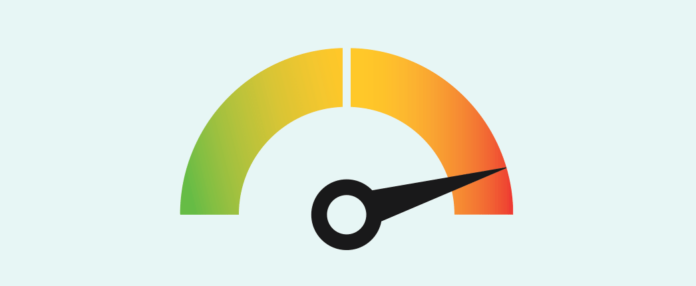Need to Know
Lubricant manufacturers and distributors are currently navigating a complex array of challenges, including decreasing demand, escalating costs, heightened competition and decreasing prices. This combination significantly strains profitability, complicating efforts for companies to maintain healthy margins. In an environment marked by increasing expenses, soft demand and fierce rivalry, adjustments are essential, and something has to give.
It is widely recognized among stakeholders that the United States lubricants business is in a phase of decline within its life cycle. Several factors—including longer drain intervals, a shift toward electric vehicles, a decrease in driving frequency among certain demographics, and additional factors—influence this reduction in demand. While temporary increases in demand may occur, the overall trajectory is downward, particularly in the PCMO segment. Importantly, while there is potential for growth in international markets, distributors cannot alter the downward demand trend within the U.S. As a result, lubricant demand remains locked in a negative trajectory for certain business segments, which is also related to pricing considerations.
With declining demand, blenders and distributors are pressured to cut lubricant prices to maintain competitiveness. The fierce competition amplifies the downward pricing pressure, which can result in a perilous cycle (a death spiral) of ongoing price reductions that deplete profits to unsustainable and dangerous levels. Many distributors indicate that we are fast approaching this alarming threshold.
While marketers can increase prices in response to increasing costs with the goal of avoiding margin compression, doing so typically provokes customer resistance. In the aftermath of COVID, when supply chains were severely disrupted, and there were severe additive shortages, there was minimal customer pushback against price hikes. This dynamic shifted, however, as the availability of lubricants improved, and customers were empowered to exert greater influence over market pricing. With that, lubricant marketers observe an increase in price shopping and private businesses seeking competitive bids for supply, where the lowest bidder secures the contract. Consequently, sales interactions have become more transactional, prioritizing price over long-term relationships, reputation, quality, service, trust and brand loyalty.
While marketers retain control over pricing mechanisms, their capacity to implement increases is significantly influenced by competitive pressures. And with that—although there have been no official announcements regarding reductions in lubricant prices this year—distributors report that prices have declined by 5-10 cents a gallon each month over the past four months.
Rising expenses have also emerged as a significant barrier to achieving profitability. Factors such as inflation, soaring wages, increasing repair and maintenance costs, substantial hikes in insurance premiums, and the overall rise in prices of various inputs have all contributed to this challenge. Specifically focusing on labor costs, discussions with lubricant distributors indicate that inflation-adjusted hourly wages have surged by nearly 50% since the beginning of the COVID pandemic. This surge is attributed to a shortage of qualified personnel, heightened competition for skilled workers and inflation.
The insurance costs associated with lubricant manufacturing and distribution have also sharply increased. Premiums for general liability, property, commercial auto coverage and worker’s compensation are all rising. Distributors say that property and general liability insurance alone have escalated by 30%-40% over the past few years, further diminishing profit margins.
On a more encouraging note, blenders and distributors have indicated that additive prices have largely held steady, alongside some recent drops in base oil prices. Nevertheless, despite this somewhat favorable news, lubricant marketers face considerable obstacles in 2024. They are selling less, generating lower revenue per sale, and encountering intense pricing pressure and rising production costs for their offerings.
For businesses to endure in this challenging climate, it is imperative to recognize that they cannot change the demand trajectory, halt inflation and escalating costs, or achieve success through price competition alone.
Additionally, companies must implement proactive strategies to ensure a sustainable profit margin. Those who have achieved this balance emphasize the importance of remaining competitive in pricing while deliberately avoiding price wars. To prevent burning resources on low- or no-profit accounts and some that merely serve as “bragging rights,” they consistently evaluate account profitability and direct their efforts toward customers who appreciate product quality, value-added services, exceptional customer support and other benefits that are not price-dependent. This may even involve stepping away from national account opportunities with the major in certain instances. Previously, distributors accepted both profitable and unprofitable national account businesses, but this is no longer a viable option for a growing number of distributors.
In addition to these efforts, numerous lubricant distributors assert that to achieve positive results in this challenging environment, it has now become imperative to implement cost-cutting measures to lower operational and personnel costs. Doing so includes implementing advanced technology and automation (including AI), closing inefficient locations and streamlining management. Regarding the latter, some of the largest lubricant distributors have recently taken notable action by identifying managerial redundancies and letting go of high-salary managers brought in through acquisitions.
In closing, the implementation of these and other cost-reduction strategies, although potentially painful, is becoming essential for maintaining profitability and navigating the current challenging business landscape. While some organizations have the vision, scale, skills and resources to adapt effectively, others will likely be forced to exit the market, contributing to a more rational business environment.
Tom Glenn is president of the consulting firm Petroleum Trends International, the Petroleum Quality Institute of America, and Jobbers World newsletter. Phone: (732) 494-0405. Email: tom_glenn@petroleumtrends.com
